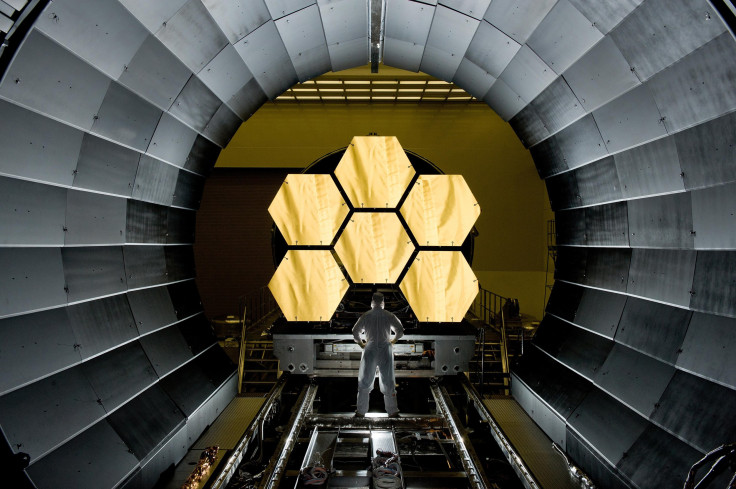NASA Gets A Budget Increase In Congress’ New Spending Bill, James Webb Space Telescope Safe From Cuts
Congress unveiled its 2014 spending bill and as part of the $1.02 trillion budget, NASA will get a small increase in its budget for 2014. A $17.6 billion budget for 2014 means big projects, including the James Webb Space Telescope will continue to be well-funded.

The James Webb Space Telescope, the successor to the Hubble Space Telescope, will launch in 2018 but NASA is hard at work assembling and developing the massive project. The JSWT is being assembled NASA’s Goddard Space Flight Center and while NASA has big plans for its new space telescope that has not guaranteed the project’s continued support.
In 2011, the James Webb Space Telescope was nearly cancelled as part of 2011’s spending bill, reports Reuters. The project was saved after NASA agreed to cut funding for commercial space taxis and cap the JWST’s budget at $8 billion.
Congress released its $1.02 trillion spending bill for the fiscal 2014 on Jan. 13, reports the Washington Post. Compared to fiscal 2013, NASA will see a budget increase as part of the 3 percent increase in budget for the subcommittee on Commerce-Justice-Science.
According to Science, NASA had a fiscal 2013 budget of $16.9 billion with a $17.7 billion budget request for fiscal 2014. The spending bill set the space agency’s budget at $17.6 billion, a 4.1 percent increase from its 2013 budget. Congress kept the 2011 provision capping the James Webb Space Telescope budget at $8 billion.
The full breakdown of NASA’s budget includes $5.15 billion for science; $1.34 billion for its planetary sciences program; $4.1 billion for exploration; $566 million for aeronautics; $576 million for space technology; $3.8 billion for space operations; $116 million for education; $2.8 billion for cross agency support and maintenance; $515 million for restoration; and $37.5 million for the office of inspector general.
Provisions include an $80 million allocation for a Jupiter-Europa mission, $1.2 billion provision for the development of the Orion Multi-Purpose Crew Vehicle and $2 billion for the Space Launch System.
NASA is currently assembling the James Webb Space Telescope, following the arrival of the final set of 18 mirrors in December. These mirrors will be assembled as a giant 21.3 foot primary mirror, Hubble’s primary mirror measures 7-feet, 10-inches, in diameter. The space telescope will be positioned 1 million miles away from Earth and will peer into the early universe.
NASA states, “Webb will be the most powerful space telescope ever built, able to detect the light from the first galaxies ever formed and explore planets around distant stars. It will study every phase of our universe's history, ranging from the first luminous glows after the Big Bang, to the formation of stellar systems capable of supporting life on planets like Earth, to the evolution of our own solar system.” NASA's budget will run through Sept. 30, 2015.
As the Goddard Space Flight Center works on assembling the James Webb Space Telescope, viewers can watch their progress via NASA’s website.
© Copyright IBTimes 2024. All rights reserved.












